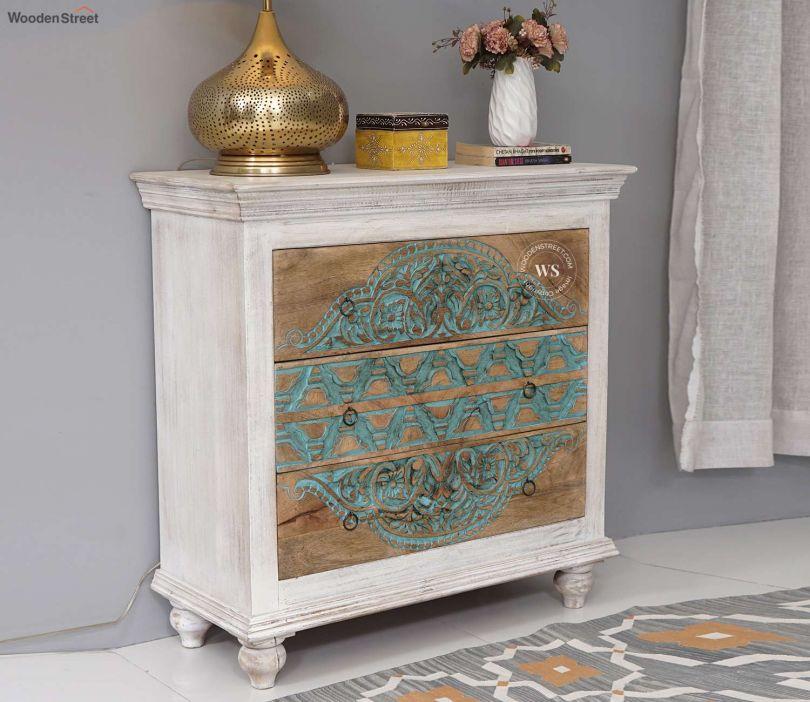A Detailed Look at the Craftsmanship of Wooden Chest of Drawers

When it comes to timeless furniture pieces that combine practicality with beauty, the wooden chest of drawers stands out. Its enduring design has served households for centuries, not only as a storage solution but also as a reflection of artistry, tradition, and evolving craftsmanship. Taking a closer look at its making reveals how intricate techniques and careful choices of material elevate this piece of furniture into more than just a utility item.
The Historical Roots of Chest of Drawers
The chest of drawers has an interesting history that dates back to when storage was primarily done using large trunks and chests. Over time, the idea of adding drawers for easier access evolved into what we now recognize as the chest of drawers. Early artisans often carved them by hand, paying meticulous attention to the wood grain and joinery. These designs often carried ornate details, reflecting cultural styles and personal preferences of the era. The craftsmanship was not just about function but also about creating heirlooms that could be passed through generations.
The Importance of Material Selection
The durability and beauty of a wooden chest of drawers heavily depend on the type of wood chosen. Hardwoods like oak, teak, mahogany, and walnut are traditionally favored because of their strength and rich grains. Softer woods are sometimes used for lighter versions, but they may not hold up as long under heavy use. The choice of wood defines not only the longevity of the piece but also its appearance and texture. Skilled craftsmen understand how each type of wood responds to carving, staining, and polishing, making this step one of the most critical in the process.
The Role of Joinery and Construction
A major element of craftsmanship lies in the joinery techniques applied. Traditional methods such as dovetail joints, mortise and tenon, and tongue and groove have been valued for centuries due to their strength and precision. These techniques ensure that a chest of drawers remains sturdy even after years of daily use. While modern manufacturing sometimes relies on metal fixtures and adhesives, handcrafted pieces that incorporate traditional joinery highlight the artistry and dedication of the maker. The way drawers slide smoothly, align perfectly, and withstand repeated use is a true testament to the skills behind construction.
Carving and Decorative Details
Another aspect that defines the craftsmanship of wooden chest of drawers is the addition of decorative details. Depending on the style, artisans may incorporate hand carvings, engraved patterns, or inlaid designs. These embellishments can range from subtle motifs to elaborate artistry that transforms the furniture into a statement piece. Even minimalist designs, with clean lines and refined edges, reflect the precision and care of the craftsman. Such details require not just technical skills but also a strong sense of aesthetics to balance function with beauty.
The Finishing Touches
The final stages of crafting a chest of drawers involve sanding, staining, and polishing. These processes not only bring out the natural beauty of the wood grain but also provide protection against wear and tear. A well-applied finish enhances durability, resists moisture, and maintains the rich look of the wood for years. Craftsmen often experiment with different finishes, from glossy sheens to matte textures, to complement the overall design and the intended space where the furniture will be placed. These finishing touches complete the transformation of raw material into a polished masterpiece.
Functionality Meets Design
While artistry and tradition play a vital role, the functionality of a chest of drawers cannot be overlooked. A well-crafted piece balances design with utility. The size of each drawer, the smoothness of its movement, and the sturdiness of the frame all contribute to the user’s experience. Modern interpretations often incorporate additional features such as concealed compartments, soft-closing mechanisms, or modular designs to meet the needs of contemporary homes. However, even with these innovations, the essence of craftsmanship remains rooted in precision, durability, and thoughtful design.
Sustainability in Modern Craftsmanship
In today’s world, sustainability has become an essential aspect of furniture making. Many skilled artisans and workshops are embracing eco-friendly practices, such as sourcing wood responsibly, recycling materials, and using natural finishes. A wooden chest of drawers made with sustainability in mind not only serves the present but also respects the environment for the future. The craftsmanship here is not just about the physical piece but also about the values and responsibility that come with its creation.
The Lasting Value of a Wooden Chest of Drawers
One of the most compelling reasons people continue to invest in wooden chest of drawers is their long-lasting value. Unlike cheaper alternatives made from particle board or synthetic materials, a solid wooden piece ages gracefully. Over time, the surface may develop a patina that adds character and uniqueness. When well maintained, it becomes more than just furniture—it turns into a cherished item with memories attached. The craftsmanship ensures that it does not merely serve a functional role but also carries emotional and aesthetic worth across generations.
Conclusion
The wooden chest of drawers exemplifies how functionality and artistry come together through careful craftsmanship. From selecting the right wood and applying traditional joinery techniques to adding decorative details and perfecting finishes, every stage reflects the dedication of skilled artisans. Its history, durability, and evolving designs highlight why this piece continues to hold significance in homes around the world. More than just a storage unit, it stands as a symbol of tradition, creativity, and enduring quality.







